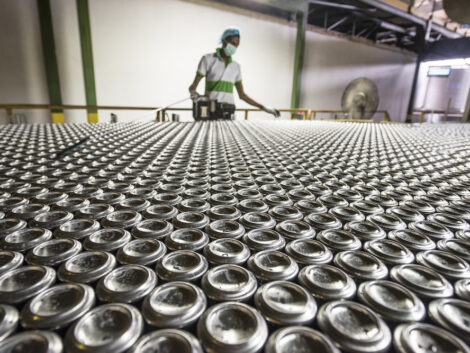US targets 70% can recycling target by 2030
Can Manufacturers Institute (CMI) beverage can manufacturer and aluminium can sheet producer members are committing to achieving US recycling rate targets including a 70% recycling rate by 2030.
These new targets will improve the circularity of the aluminum beverage can, while demonstrating to beverage companies and consumers the industry’s dedication to ensuring the aluminum beverage can remains the most sustainable package on the market.
The targets are being set through CMI, which represents U.S. metal can manufacturers and their suppliers. The aluminum beverage can recycling rate was 45% in 2020, and the industry aims to attain even higher recycling rates beyond 2030 with an 80 percent rate by 2040 and more than 90 percent by 2050.
CMI’s approach to achieving its recycling rate goals will be to change consumer behavior through activities in four pillars of action:
- Catalyse the passage and implementation of well-designed deposit systems at the state and federal levels
- Increase and improve household and away-from-home recycling
- Ensure that more cans are properly sorted at recycling centers
- Increase consumer understanding on the importance of aluminum can recycling and the ability to collect and sell used beverage cans for cash
CMI members supporting the targets are aluminum beverage can manufacturers Ardagh Metal Packaging, Canpack, Crown Holdings and Envases; and aluminum can sheet suppliers Constellium, Kaiser Aluminum, Novelis and Tri-Arrows Aluminum.
“CMI’s aluminium beverage can recycling goals are inspired by our member’s commitment to sustainable and responsible world class, circular manufacturing processes,” said CMI President Robert Budway. “The industry is working collaboratively to increase recycling rates to benefit not only the industry’s growth, but also to strengthen the US economy and play our part in planet stewardship.”
The environmental and economic benefits of greater aluminum beverage can recycling are astounding. If the aluminum beverage can recycling rate had been 70 percent in 2020, instead of 45 percent, there would have been around 25.6 billion more cans recycled, which would have generated more than $400 million in revenue for the US recycling system and resulted in energy savings that could power more than 1 million U.S. homes for an entire year.
The industry will publish in early 2022 a roadmap with more details on how via these pillars the targets will be achieved.








